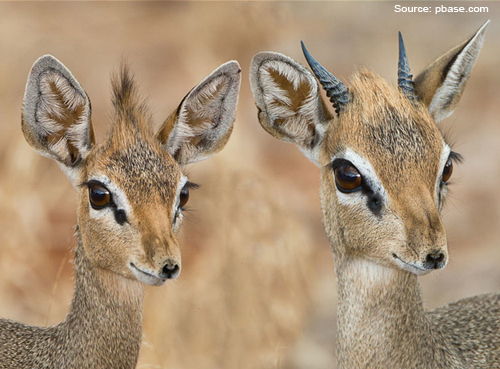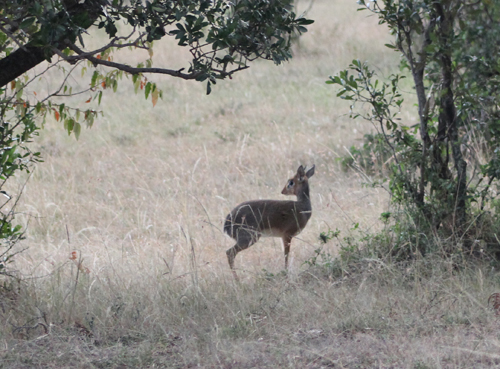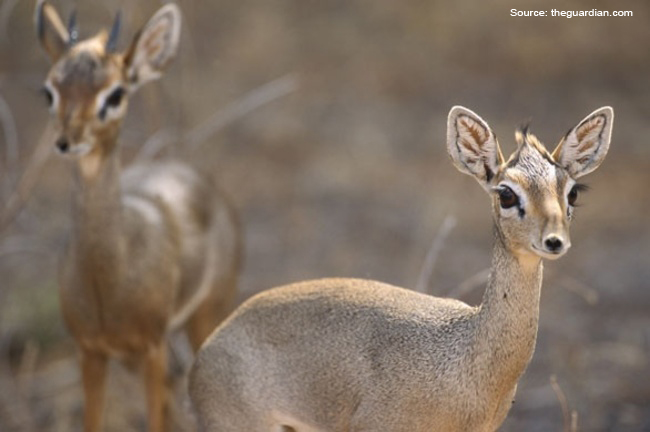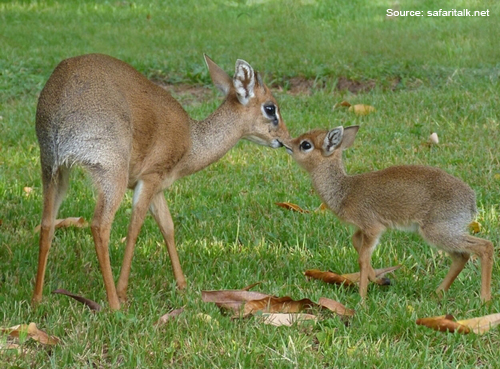Meet the tiny and delightful Dik-Diks!
Usually found skulking amongst the roadside bushes on safari, the sweet little Dik-dik antelopes are some of the smallest antelopes to be found in East Africa, especially in Kenya and Tanzania. Their nervous disposition means that they are usually seen for a few seconds before they sprint off into the cover of the vegetation. They are sometimes encountered on our guided bush-walks, where evidence of their presence is given away by the characteristic piles of little dung pellets they deposit as territory markers, as by the presence of thick, black smears they deposit on short plants from the pre-orbital glands in front of their eyes.

Dik-diks get their comical name from the alarm calls given by the females, which some say sounds like “dik-dik, or “zik-zik”.” Both the females and males issue alarm whistles that other animals also respond to.
Dik-diks have a characteristic long, prehensile nose, which they use to sniff their way around, and also to regulate their body temperatures when it gets too hot. In areas such as Samburu, in Kenya, the temperatures can often reach the high 30s, and dik-diks cool off by resting in the shade and the blood flow to their noses increases, which cools the blood as it is circulated in their bodies. They prefer to feed on shoots, leaves and fruits, and do not require extra water necessarily, as they get all the moisture they require from the food they browse on.

Dik-diks stand at about 30–40 cm (12–16 in) at the shoulder, and weigh between 3-6kg. The females are generally larger in size than the males of the species. They live in monogamous pairs, and mate for life. Dik-diks have a lifespan of about 10yrs. It is said that if one of the pair dies, the other will soon follow suit, as they cannot bear the loneliness, and they do not usually search for new mates.

A female will give birth to one offspring at a time, following a gestation of just under 6 months. The young grow quickly, and by the age of 7 months, both males and females are ejected from the family home, to fend for themselves.

All sorts of predators, ranging from eagles, to snakes, the big cats, hyenas, jackals and even baboons, hunt these delicate little antelopes. No wonder they are so nervous all the time!
